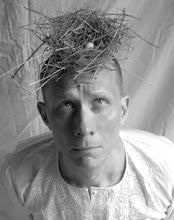“I don’t think the Dance Exchange folks realize how pervasive the Critical Response Process is. Every artist in the United States who has any form of critical response is using a derivative of the CRP.”
A comment to that general effect was passed on to us by Rebekah West, who recently hosted a small Dance Exchange team for Critical Response activities at the ATLAS Alliance at the University of Colorado, Boulder. In her email reporting this comment, she asked what I thought.
Here goes: I’m a little skeptical given the absolute quality of the comment. But Critical Response Process definitely has a life of its own out there beyond the institution where it began. It is in the nature of a technique like CRP that it may get passed hand-to-hand, or mouth-to-ear, on a kind of oral history basis. Hence derivatives are inevitable. Some of them are probably thoughtful adaptations for the needs of a particular setting and use; some may turn out looking like more distant relatives (I’ll admit I’m resisting the urge to use the work “bastardizations”); and sometimes worthy practices may have features in common with CRP but descend from separate lineages.
I definitely hear reports of CRP thriving in places where we had no idea that it was being used. I also encounter plenty of people in the arts field for whom it is entirely new and surprisingly different from what they are used to. And then I hear people describe what they think is CRP or “just like your process,” when in fact what they are describing is different in one or more essential features.
Frankly, it is a challenge for Dance Exchange as an institution to keep track of where the Critical Response Process gets used, who’s doing it, how it gets varied, what’s a practice we’d endorse and what isn’t. We have ongoing discussions in our offices about getting an intern to do research on CRP’s use in the field and about the desirability/feasibility of setting up a certification program. The most realistic position for us at this point is to do our best to be a resource with our book, trainings, and now this blog; and to continue to act as a kind of laboratory probing deeper and wider into the applications and implications of a process that's clearly too big to be contained by just the institution that started it.


No comments:
Post a Comment